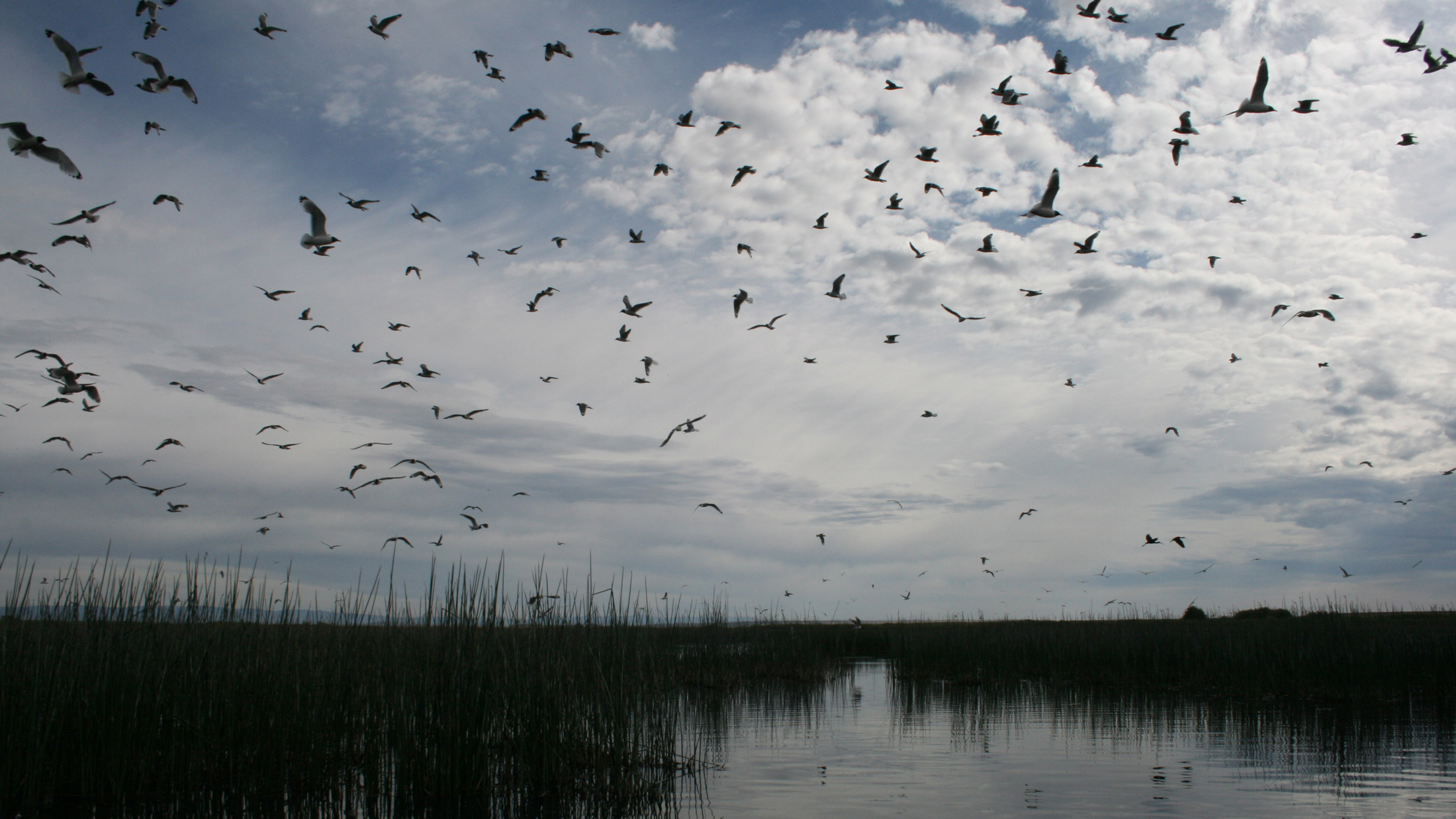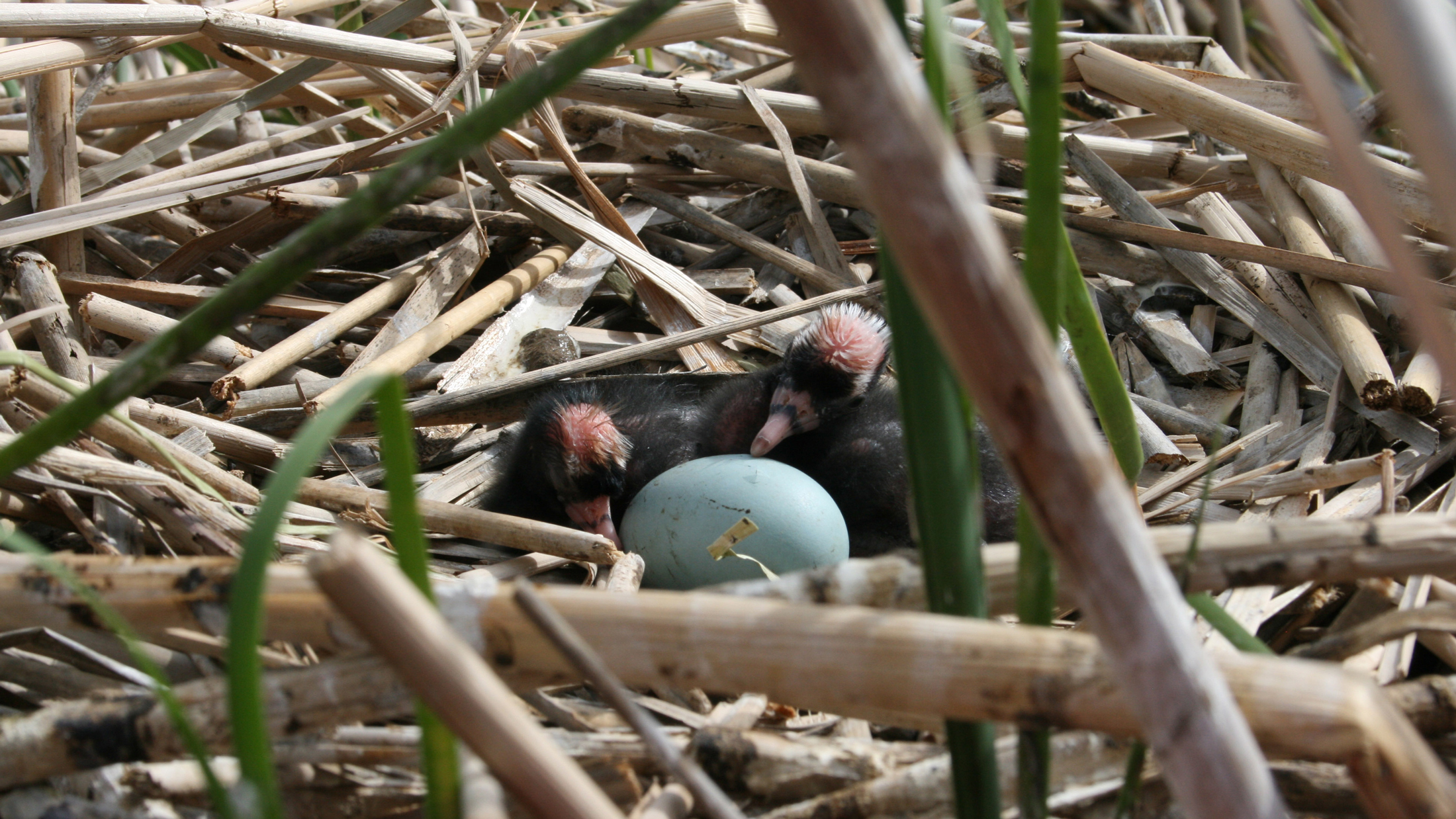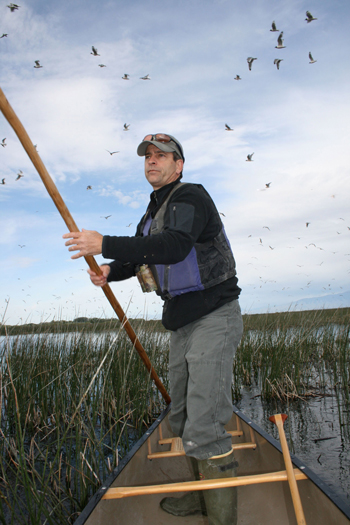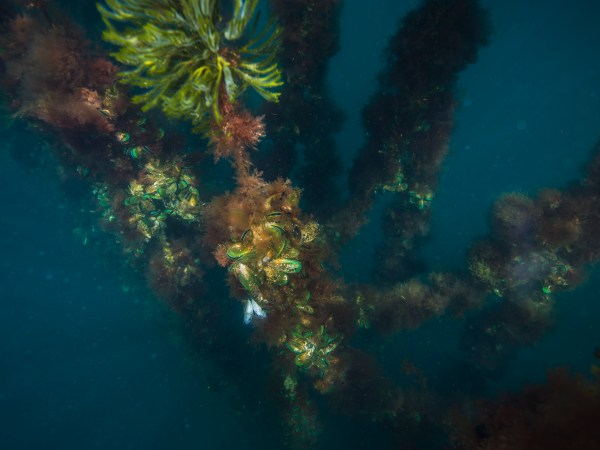Bring your waders and wear a hat. Those are the instructions Idaho Department of Fish and Game wildlife biologist Rob Cavallaro gives me when he invites me to go to work with him one day in early summer. Waders and hat are in addition to my camera and his canoe. I’ll be shooting footage while he’s counting birds and we’re doing our jobs via paddle because what we’re after lives on water.
“If we can keep ibis foraging here then we’re protecting a larger system,” Cavallaro says. “Ibis need protected wetlands and surrounding landscapes. If you can protect both of those then you are protecting a lot of birds.”
Mud Lake Wildlife Management Area is in rural eastern Idaho. It’s a state-managed wetland surrounded by private farm ground. In early summer, birds bombard the area in droves for both types of landscape: wetlands for nesting, farms for forage. The combination is ideal for wading birds such as Franklin’s gulls and white-faced ibis. The ibis, in particular, need Mud Lake like rivers need rain.
“These colonies are some of the most, if not thee most, important breeding areas for white-faced ibis in the world,” Cavallaro says as he starts paddling his red canoe through hardstem bulrush and I settle myself with lens pointed over the bow at the ruckus we are quietly gliding toward.

The wildlife is so loud that we stop talking to each other and go wide-eyed with closed mouths. Thousands of birds are screaming at us to leave their house and their kids alone. They pass so aggressively close that I’m relieved to be tucked low while Cavallaro boldly stands tall so he can slowly pole us through waterlogged grass. Nests are on both sides of the canoe. Some woven within reeds. Others, a pile of dry stems. All with eggs. Some are Easter egg blue. Those are white-faced ibis. Others are speckled malt. Those are Franklin’s gulls.
“It sounds like a lot of life in a small area,” Cavallaro says.
The sound and sight of the place is overwhelming. So is the smell. I notice a freshly pungent scent and raise my head from my camera. I’ve been bombed. The microphone attached to my camera is coated in milky goo. That spot is mere inches from my eye when I’m looking through the viewfinder. These birds are not coy about their ‘keep out’ tactics. Cavallaro laughs.

“They typically flush off their nests, but stay nearby over the surveyors and often try to hit us. They dive bomb us with poop as a way to defend their nest,” he says. “Pretty often you get hit. The canoe gets hit. It’s a good place to wear a hat.”
They’re flushed. And flushing. Now I know why Cavallaro specifically mentioned wearing a hat. I pull my ball cap lower and keep rolling.
There’s life around every wet turn in the marsh. It’s thrilling until we pass some nests void of life. The chicks are headless. Cavallaro, my canoe guide, still poling with confidence through the parade of poop explains the beheadings as great-horned-owl induced.
“Like dangling yarn in front of a cat. Eventually he’s going to take a swipe at it. He can’t help himself,” Cavallaro says. “Most of the carcasses are on site. Maybe the owl ate one or two then just became stimulated by the action of adults squawking and chicks running around and went into a predatory frenzy.”
Frenzy is the norm here. Mud Lake is so alive with nature above, at and below us that it’s exhausting. It’s natural success on a grand scale, but it’s fragile. The wetlands are surrounded by farmland.

Agricultural advances turning farms from flood irrigation to center pivots cut into forage options for feathered ones that prefer shallow water worlds. That’s why state agencies and conservation organizations like The Nature Conservancy work with farmers who haven’t turned to pivot irrigation yet.

“There are incentives for landowners willing to keep their land in flood irrigation,” Cavallaro says. “Mud Lake is one of the key areas allowing farmers to keep land in flood irrigation. We see very little use by foraging birds of center pivot farming.”
Irrigation is not on the colony’s mind while we’re here. The prime focus is protecting the young from us so the adults have reason to forage, and something to feed, once we leave.
I can respect that. I don’t like my babies crying about empty bellies or the dangers of strangers. I tell Cavallaro I’ve seen plenty when he tells me he’s done surveying. We turn the canoe around and leave the riot zone.
I hear the colony’s calls long after we are out of the marsh. I like that sound. The birds are going about their business thinking they scared us off and that’s okay by me. Poop bombs are pretty effective.
Millgate is an outdoor journalist based in Idaho Falls, Idaho. See more of her work at www.tightlinemedia.com



Yes, most (if not all) the birds in the photos are Franklin’s Gulls.
Interesting project but most of the footage showed gulls rather than ibis. Or are my eyes deceiving me?